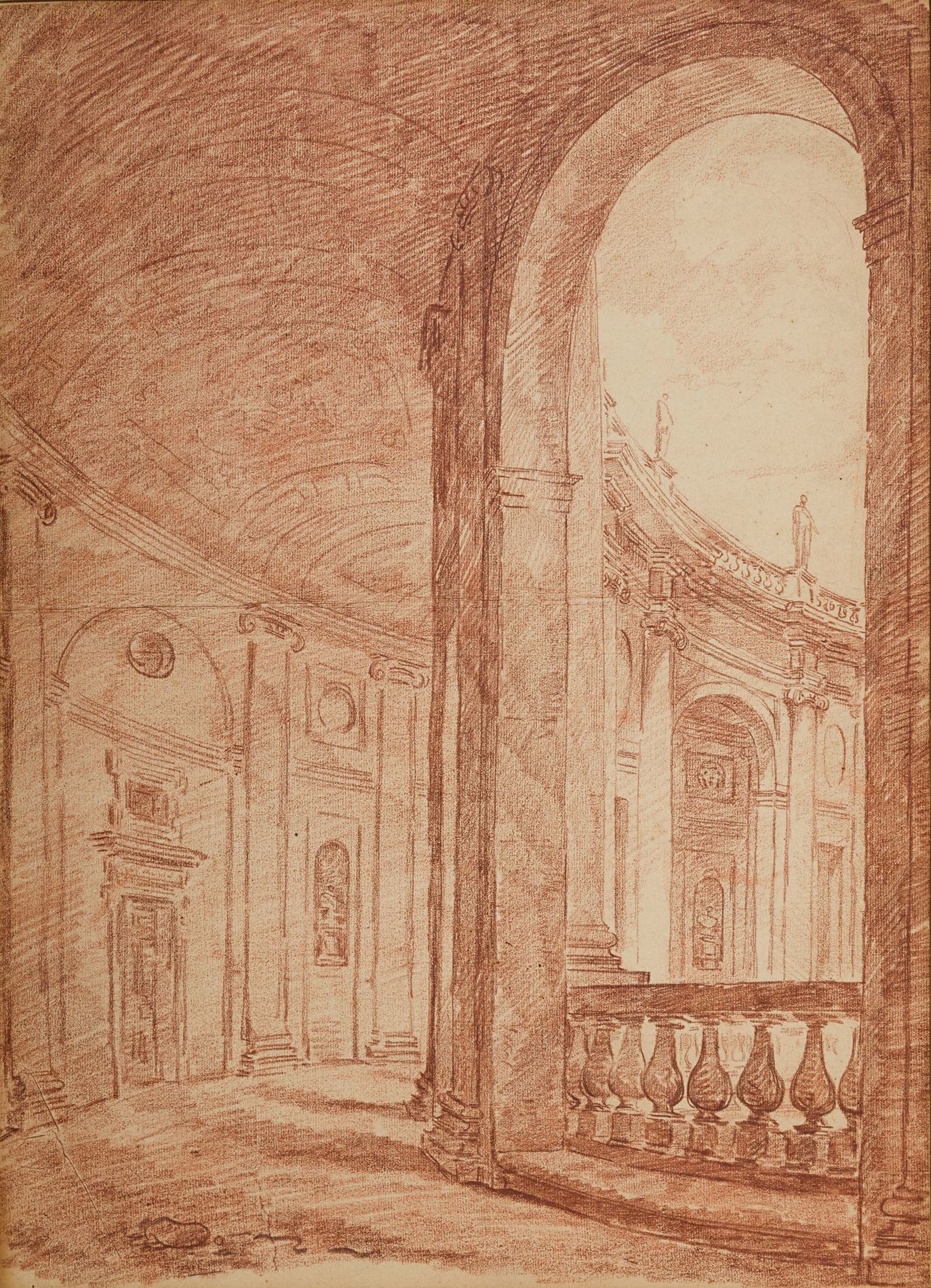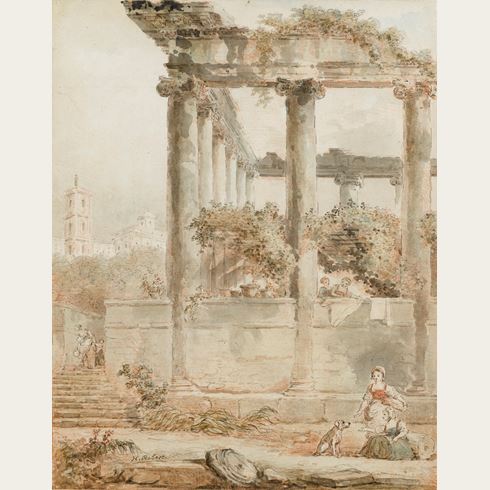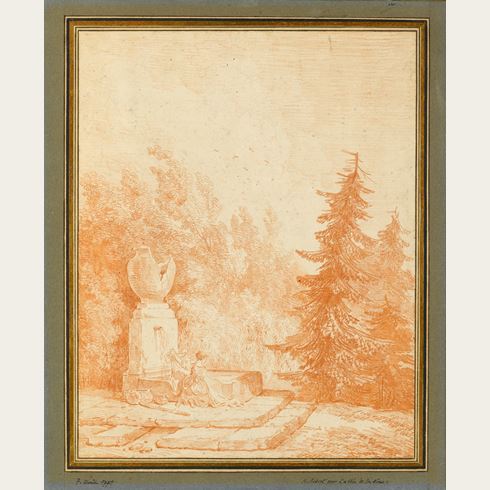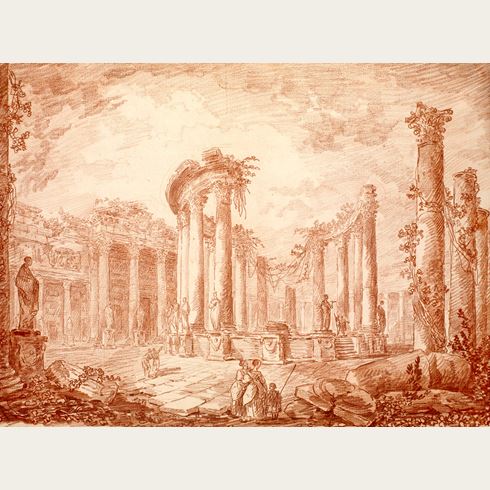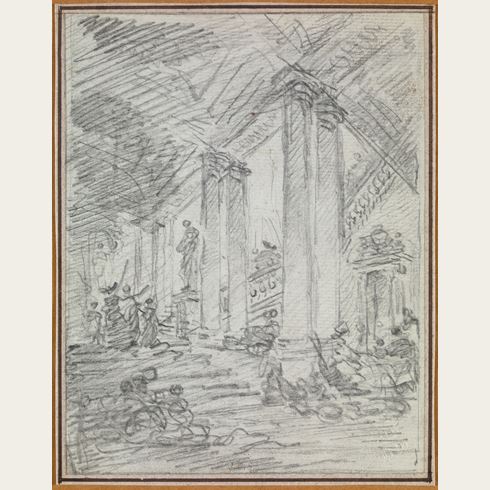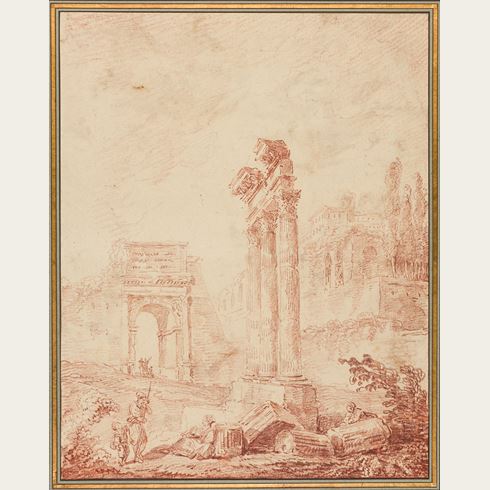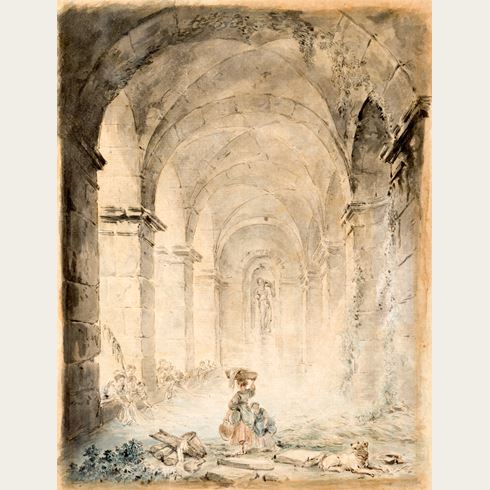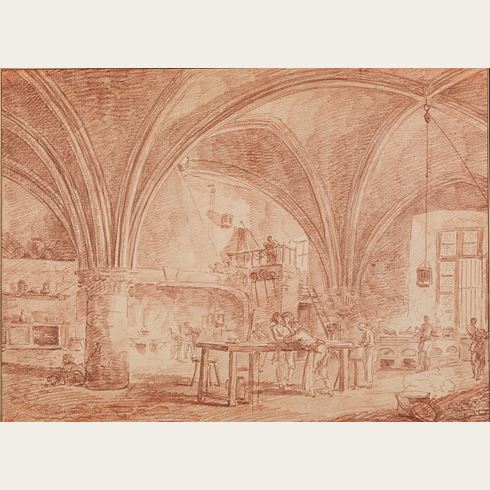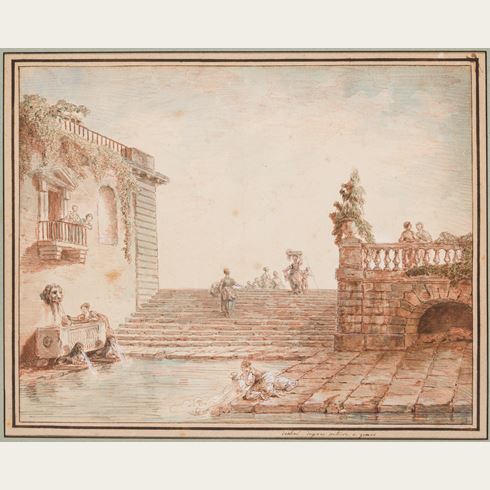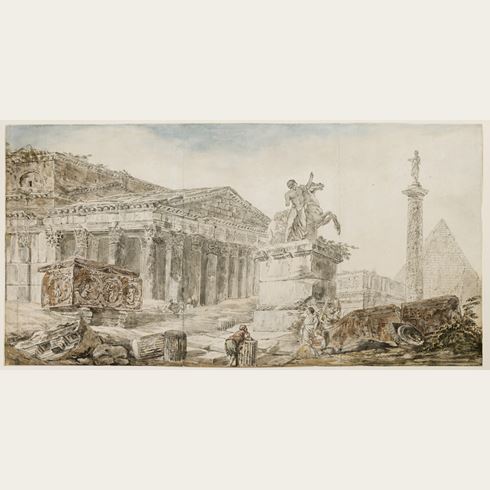Hubert ROBERT
(Paris 1733 - Paris 1808)
The Loggia on the Upper Floor of the Palazzo Farnese at Caprarola
Laid down on a 19th century mount.
457 x 328 mm. (18 x 12 7/8 in.)
Other chalk drawings of Caprarola by Robert are in the Musée de Beaux-Arts in Valence, while a set of six counterproofs of drawings of the Palazzo Farnese are in the Bibliothèque Municipale in Besançon. Two other drawings of Caprarola are found in a sketchbook used by the artist during his period in Italy, which belonged to the Marquis de Ganay and the Comtesse de Béhague and was broken up at auction in Monaco in 1989.
A student of the sculptor Michel-Ange Slodtz, Hubert Robert travelled to Rome in 1754 in the retinue of the new French ambassador to the Vatican, the future Duc de Choiseul. It was probably through the influence of Choiseul that, although he was not officially a pensionnaire at the Académie de France in Rome, the young Robert was able to study there for several years. Succinctly described by the director of the Académie de France, Charles-Joseph Natoire, as a young man ‘who has a penchant for painting architecture’ (‘qui a du goût pour peindre l’architecture’), Robert spent a total of eleven years in Italy, mostly in Rome. He fell under the particular influence of Giovanni Paolo Panini, the leading Italian painter of architectural views and capricci, who taught perspective at the Académie de France. Robert’s earliest paintings and drawings, both in composition and technique, are greatly indebted to the example of Panini. At the Académie de France Robert met and befriended Jean-Honoré Fragonard, and with him made sketching tours of the countryside around Rome.
Robert returned to Paris in 1765, and the following year was admitted into the Académie Royale as a ‘peintre des ruines’, rather unusually being both reçu and agrée in the same year. He made his debut at the Salon in 1767, exhibiting picturesque landscapes and capricci, and soon had developed such a reputation for paintings of real and imagined Roman views, often incorporating ancient ruins, that he was given the sobriquet ‘Robert des Ruines’. A versatile artist, Robert often repeated and developed favourite views or compositions in several different formats, including chalk drawings, finished watercolours, small cabinet pictures and large-scale wall paintings. Appointed dessinateur des jardins du roi in 1778, Robert was also able to incorporate his artistic ideas into his landscape designs for gardens at Versailles and elsewhere. Despite being imprisoned during the Revolution, he remained a significant figure in the artistic scene in Paris until the end of the century.
Provenance
Galerie Cailleux, Paris, in 1985
Anonymous sale, Paris, Espace Pierre Cardin [AuctionArt-Rémy Le Fur], 27 April 2012, lot 120
Nicolas Schwed, Paris, in 2013
Private collection
Galerie Eric Coatalem, Paris
Private collection, London.
Literature

